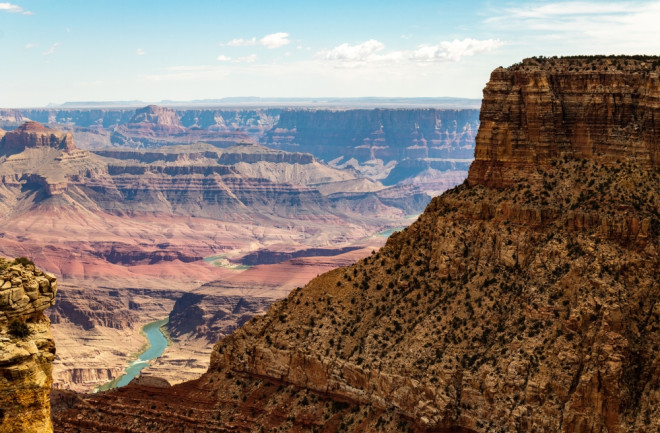The Colorado River slowly cut one of the world’s most epic scars into the landscape of northern Arizona. That scar, of course, is better known as the Grand Canyon. One of the top tourist attractions in the U.S., this natural wonder draws visitors from all over the world every year to gawk at the views created by roughly 278 miles of river.
Modern visitors are hardly the first to appreciate the vistas. In fact, archaeologists have discovered the remains of a number of ancient cultures in and around the Grand Canyon, going back at least 12,000 years. Excavations have revealed artifacts from the Clovis, the Archaic culture, the Basketmaker culture and ancestral Puebloan, as well as more recent findings from extant Indigenous groups like the Navajo, Hopi, and Southern Paiute.
Here are a few examples of the ancient archaeological artifacts that researchers have discovered in one of the world’s most impressive landmarks.
Clovis and Folsom Fragments
Two spear points — really just fragments — are the oldest surviving artifacts that archaeologists have found so far in the Grand Canyon. The Clovis point is a little older, dating somewhere between 9200 B.C.E. to 8900 B.C.E., while the Folsom fragment dates somewhere from 8900 B.C.E. to 8200 B.C.E.
The Clovis point is made from Paleo pink stone, a type of silica, and is a little more fragmented than the Folsom spear point, which appears mostly complete. While found in the Grand Canyon, the Clovis fragment wasn’t from here, but originated in the Chuska Mountains.
“It traveled a long way to get to the Grand Canyon,” says Ellen Brennan, an archaeologist with the Grand Canyon National Park.
Read More: How the Folsom Point Became an Archaeological Icon
Split-Twig Figurines
Some of the most marvelous artifacts ever discovered in the Grand Canyon were made by whittling small sticks into the shapes of animals like deer and bighorn sheep. These palm-sized artifacts date to about 4,000 years ago in the Late Archaic period.
Archaeologists have discovered these figurines in other areas but hundreds of these split and shaved twigs have been found in the Grand Canyon, indicating they were likely produced there. Some of these animal figures had small spears piercing through their bodies, indicating they may have been used as talismans.
“We think it was a method in which to improve the chances [to] be successful in hunting,” Brennan says.
Read More:The 6 Most Iconic Artifacts From The Ancient World
Basketmaker Artifacts
The Basketmaker culture of the Southwest was known to live in the Grand Canyon from roughly 550 to 825 C.E. Their name comes from the high-quality baskets that were so tightly weaved that they could have held water.
“They are just very well made — super tight weave,” Brennan says.
Some of the caves where they were found are dry enough that these relatively perishable artifacts have survived. While the baskets discovered in the Grand Canyon don’t have any visible signs of the zigzag patterns that this culture weaved in other parts of the Southwest, some pottery has been discovered that does carry these patterns. Both the ceramics and the baskets are between the size of a salad and soup bowl.
Read More: European Basket-Making Is at Least 9,500 Years Old
Ancestral Puebloan Pottery
There isn’t exactly one piece of ceramic ware that stands out among the many archaeologists have found dating to the Ancestral Puebloan people. This culture lived in the Grand Canyon from roughly 825 C.E. to 1250 C.E. Instead, Brennan says the whole series of pottery taken together illustrates how the artistic motifs went from the simpler geometric designs of the Basketmaker culture to more elaborate geometric patterns.
“One of the most import things about Ancestral Puebloan period is all of the pottery that helps us date them,” she says.
The quality of the ceramics also improves over time as the Ancestral Puebloans become more skilled in their craft. Some of the later work is broken into sections, each with unique patterns.
Read More: No, Egyptian Artifacts Were Never Found in the Grand Canyon
Joshua Rapp Learn is an award-winning D.C.-based science writer. An expat Albertan, he contributes to a number of science publications like National Geographic, The New York Times, The Guardian, New Scientist, Hakai, and others.

